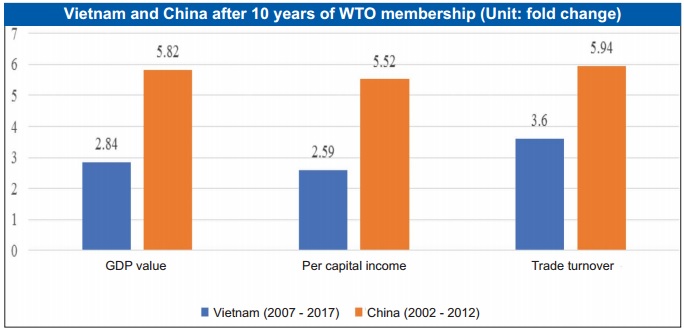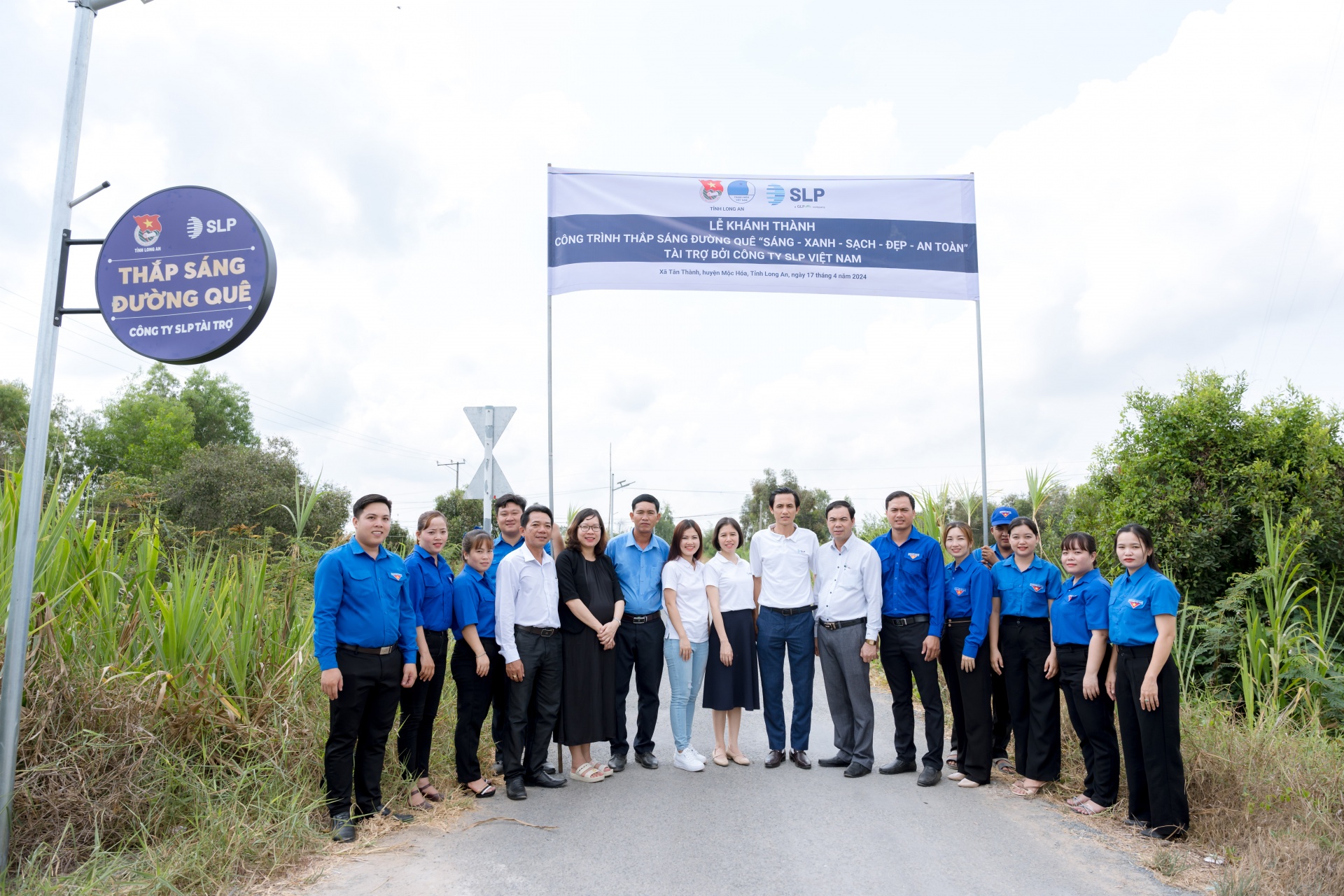In record 2017, Vietnam living up to its potential
 |
Do Thien Anh Tuan of the Fulbright Economics Teaching Program highlights the key to further boosting economic growth in 2018.
In the 10 years since Vietnam joined the WTO, the Southeast Asian country has attained various noteworthy socio-economic achievements, with GDP growth reaching 6.81 per cent in 2017.
In the same year, Vietnam saw improvements in its investment climate, with total foreign direct investment inflows of nearly $36 billion, a year-on-year hike of 48 per cent. The country’s FX reserves amounted to $51.5 billion, while foreign exchange rates remained steady, and the balance of payments saw a sustainable surplus. The arrival of 13 million international tourists to Vietnam in 2017 propelled the need to develop tourism into a spearhead economic sector. Another outstanding outcome is the soaring of Vietnam’s trade turnover to $400 billion – including $214 billion from exports – enabling the country to become an integral part of the global value chain.
Vietnam’s economy has experienced nearly three-fold growth when compared to that seen a decade prior, while per capita income saw a 2.6-fold increase against the reviewed period. The two figures, however, remain modest compared to those recorded in China 10 years after its WTO membership began; both the Chinese economy in general and its per capita income increased by almost six-fold in the period.
Free trade agreements (FTAs) have helped bring the country’s trade turnover to $400 billion in 2017, almost a 3.6-fold increase over that of 10 years ago, while the figure in China rose by six times in the same period. Vietnam should have reached these outcomes before 2017, had reforms intensified and become more effective right after the country joined the WTO.
 |
In 2017, the process of international integration resulted in a considerable spillover effect on the Vietnamese economy, although the country signed no new or considerable FTAs. APEC 2017, held in Danang, will luckily not bring about a “boom and bust” situation for the local economy the way APEC 2006 did. Thanks to its improved performance in capital management and continual efforts to carry out reforms, Vietnam is earning more benefits from international integration. Numerous commitments to further political, institutional, legal, and administrative reforms towards higher transparency, accountability, and efficiency leveraged the growth.
Specifically, reforms in an array of segments – including goods, production, labour, natural resources, banking, and finance – forced resources to be reallocated in a more efficient and productive manner. Vietnam’s business climate was improved to keep pace with business standards of ASEAN-4 countries (Indonesia, Malaysia, the Philippines, and Thailand), and of member countries of the Organisation for Economic Co-operation and Development.
Vietnam is speeding up the process of signing new FTAs in order to create more room for economic growth. Nevertheless, benefits to be reaped from commitments under each FTA will lessen, as most of the world’s largest economies, as well as trade and investment partners, have signed direct FTAs with Vietnam and ASEAN.
Two much-anticipated trade agreements between Vietnam and its partners have encountered impediments. Following the US’ withdrawal from the Trans-Pacific Partnership (TPP), Vietnam and the remaining partners have initiated new negotiations. The negotiating parties reached a basic consensus within the framework of APEC 2017, christening this new TPP the Comprehensive and Progressive Agreement for TPP (CPTTP).
Although some CPTTP articles have been put aside – with others to be reconsidered – CPTTP is scheduled to be signed in February 2018 in Santiago, Chile, without the participation of the US, which is the largest importer of Vietnamese goods and services.
Meanwhile, the signing of the EU-Vietnam Free Trade Agreement – expected to create a boost to Vietnam’s growth and reform, given that the EU is the second-largest export target – has seen delays.
The implementation of domestic reforms will definitely stimulate economic growth. Over the past 10 years, Vietnam’s ministries, agencies, and localities have achieved no considerable progress in making adequate integration preparations. As such, delayed signings of FTAs could help the country gain valuable time.
Several reforms have not been fully realised, while others were not even implemented. The efficiency of state management remains a problem. Stronger political reforms and anti-corruption movements might negatively leverage national growth in the short term, but could result in positive outcomes over the long run.
At the Vietnam Development Forum 2017, Prime Minister Nguyen Xuan Phuc emphasised that improvements in productivity provide solid ground for sharpening the country’s competitive edges. Phuc also highlighted the need to step up finance and banking reforms, which must focus on shifting capital to high-productivity industries, as well as bettering small- and medium-sized enterprises’ access to capital.
Overcoming the aforementioned shortcomings in reforms will prove the key to Vietnam’s success in sustainable growth and global integration. Growing domestic reforms and pressures from the realisation of international and regional commitments will form a combined force to gain success. The economic outcomes Vietnam attained in 2017, along with the government’s continual reforms, can help create a rosy economic picture for 2018.
What the stars mean:
★ Poor ★ ★ Promising ★★★ Good ★★★★ Very good ★★★★★ Exceptional
Latest News
More News
- ADB forecasts 6 per cent growth for Vietnam (April 12, 2024 | 17:17)
- SCB, Van Thinh Phat execs convicted of embezzlement; Truong My Lan sentenced to death (April 12, 2024 | 09:59)
- Finnish kindergarten opens in Hanoi (April 12, 2024 | 09:50)
- Over 746 tonnes of rice allocated to Dien Bien, Bac Kan provinces in between-crop period (April 12, 2024 | 08:54)
- Truong My Lan sentenced to death in major bank fraud case (April 12, 2024 | 08:49)
- Netflix ordered to stop distributing unauthorised games in Vietnam (April 11, 2024 | 17:06)
- Deputy PM highlights incentive policies for rooftop solar power installation (April 11, 2024 | 17:03)
- Former FLC chairman faces securities market manipulation and asset misappropriation charges (April 11, 2024 | 15:34)
- Vietnam sends over 35,900 workers abroad in Q1 (April 10, 2024 | 14:56)
- OVs in Hungary eager to join trip to Truong Sa (April 10, 2024 | 14:52)


















 Mobile Version
Mobile Version